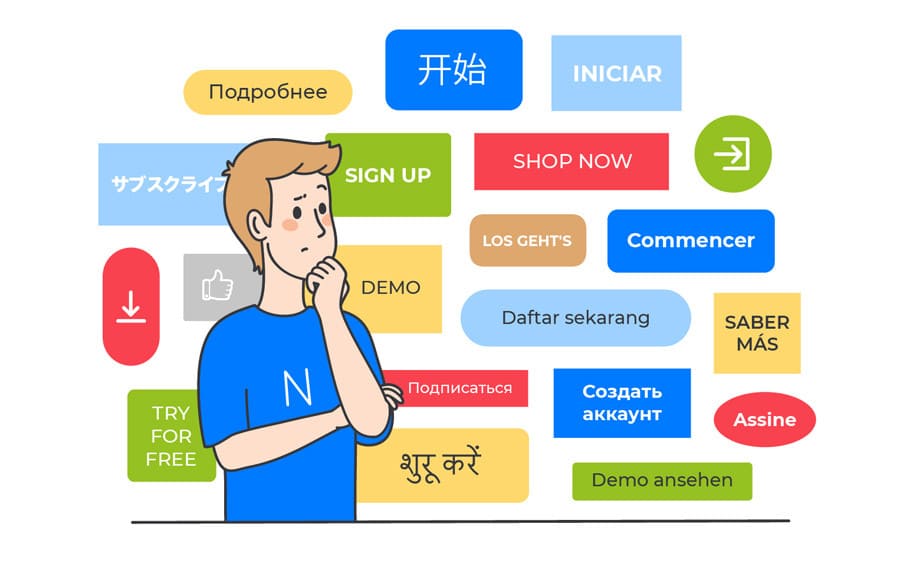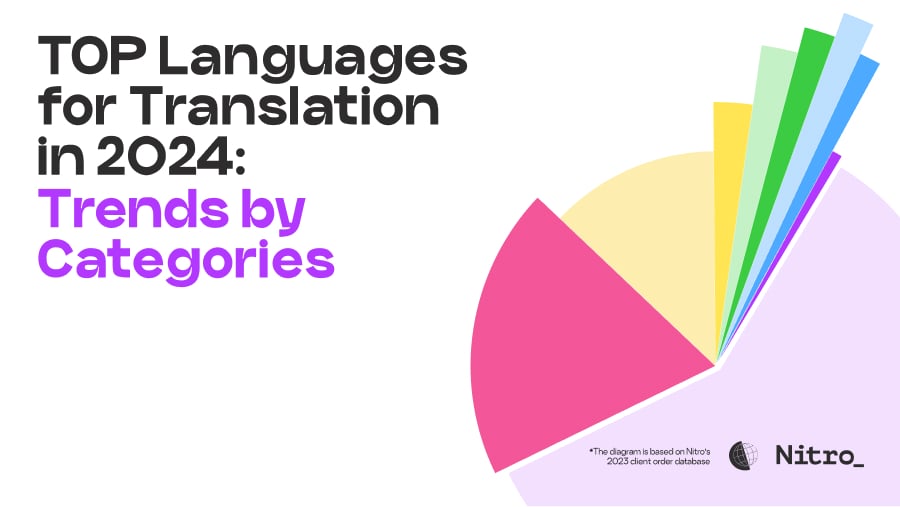Website localization is the first thing a company should do when entering the international market. In order to scale your business, you'll need to conquer a new market eventually, and that could obviously be in a region that doesn't speak your language.
Website localization is the process of adapting a resource and its content, taking into account the social and cultural characteristics of the target region or country. It is a complex process that requires time and resources, and the more complex the project, the more effort and time it will demand. But this process is important, because the site is your main tool for communicating with potential customers.
Let's figure out what localization is, how it differs from a simple translation, how you can localize your site, and what needs to be done to attract traffic and convert it into customers.
Translation or Localization? What’s the difference?
Let's first clarify that simple text translation and localization are not synonymous at all. Translation is an exact reproduction of the original text in another language. It helps to convey general ideas, but might miss the details or cultural specifics.
Localization is a more complex process of adapting your message to a new language, one of the steps of which is translation. It also involves localization of the content other than text. All the video, audio and images on a website need to be localized. If you want to display an iconic photo of a famous building, the localization team will find one for each country, so you can convey ideas more efficiently through text and pictures. If your business is related to holidays and celebrations, localization will adjust your website to reflect local traditions. Localization is what helps people everywhere experience your product the same way English-speaking customers do.
A multilingual site is proof of a company's serious intentions in building an international business. It demonstrates reliability and a dedication to smooth communication with foreign partners and clients.
Milestones of multilingual website optimization
Localization is a multi-step process. It can be roughly divided into 6 stages:
1) Analyze the target market
The results of the analysis will help you build a strategy for promoting your product in the future. At this stage, it is important to study the cultural characteristics of the target audience, consumer habits, effective advertising tools and relevant keywords for SEO. It will be extremely helpful to enlist local experts who know all the particular features of the region and the target audience.
2) Translation and adaptation of the text content
Before starting the website localization process, it’s wise to decide on the extent of your planned localization, and make a list of items and sections of the site that require adaptation. It is important not to forget about the text in the auxiliary sections, such as technical instructions and FAQs. Entrusting native speakers with the adaptation of the text for the target audience will help you avoid unpleasant surprises related to the quality of the translation as you enter a new market.
Translation services like Nitro and others can help with site localization. They have functions that speed up and facilitate translators' work, saving site owners time and money.
3) Adaptation of additional elements
Visual adaptation is an equally important aspect of localization. This concept involves changing color palettes, fonts, images, and videos. It may include several tasks: translation, layout, design, voice acting, and subtitling.
Due to the unequal length of text in different languages, sometimes you will have to resize buttons and windows. And if the direction of the text differs from the original site, then even the layout will need adjustments.
Also, do not forget about localizing time and date formats, currency, units of measure, and the format of mailing addresses and phone numbers.
4) SEO promotion adjustments
In different countries, internet users are accustomed to searching for the same product or service using different wording. If you pick up the wrong queries, your site will not appear on the first pages of search results and your target audience will not see it. So it's worth studying the SEO strategy and the results achieved by experienced competitors in order to understand exactly which keywords work in a particular search engine.
5) Localization testing
This is the final stage, which helps to identify errors and problems: untranslated text fragments, broken links, non-optimized sizes of buttons and windows, and technical bugs. The testing team reviews all sections and checks links, paying attention to the placement of text and images, the size of graphic elements, and the adaptations made for currency and units of measure. Then they submit a report of errors found so corrections can be made.
Website localization options
You can do localization on your own, bring in third-party services, or use online translation engines. Each method has advantages and disadvantages.
Professional company
This is a great solution for companies that are just taking their first steps in new markets or do not have their own localization team. An experienced localization agency will help you develop a strategy and choose languages, and they will select specialists to do the work, taking into account the specifics of the project and your deadline.
Most importantly, professional companies like Alconost can guarantee first-class website localization. We work with all types of businesses and our translators are certified linguists and native speakers. Alconost offers full in-house localization and SEO optimization services. We are an internet marketing agency that works with 100+ languages. Our services range from search engine optimization for multilingual websites to PPC management, SMM and content promotion, full SEO audits, and website optimization.
For small projects and urgent translations, we offer our Nitro service. Nitro is the perfect match for you if you need online translation or proofreading. For speedy updates, we suggest Nitro API, which automates the whole content localization process and delivers translations directly to your CMS. Both Nitro and Nitro API services connect you with translations by native-speaking professional linguists within hours.
Whether you choose Nitro translation or Alconost custom localization, you can be 100% sure your website is translated correctly and will convey the message to the new audience. Alconost has extensive experience providing website localization services to clients in various industries. If you’re looking for high-quality website localization, look no further than Alconost. Contact us today for some website localization examples and learn more about our services.
Online translation tools
This option is more of a shortcut than a real localization. To achieve the ambitious goal of conquering the foreign market, free tools like Google Translate are not suitable. But in cases where the quality of the translation does not matter, this could be an acceptable option.
If you are already using an online translation engine, then it’s wise to find an editor who will help put the text in order or ask for the service of machine-translation post-editing. And remember the risks: such a site cannot be called truly localized, and you will have no guarantee of high conversion rates.
Freelancers
This is a relatively economical, but very risky way to prepare a site for a foreign market. The services of an experienced translator, even a freelancer, will not be cheap. Translators with good reputations and plenty of experience have been on the market for a long time, and they are aware of what their services can cost.
Working with a random freelancer can bring some unpleasant surprises. One problem is that you will receive no guarantees regarding compliance with the deadline, high-quality results, or confidentiality of information. In addition, one translator may not be enough to localize your website. With a large number of translators or freelancers, communication problems are inevitable, since you need to maintain communication with all of them, and constantly monitor the work process.
In this regard, services like ours are perfect for website localization. Our team of professionals does the work according to a well-established routine, and we have the technology for any file type and integration into client content platforms.
Conclusion
A website that has been professionally translated and optimized for a different region is a reliable way to increase resource traffic, expand your target audience, and get ahead of competitors focused exclusively on the local market.
When considering ways to adapt your company's website to local markets, look for solutions that provide accurate and authentic website translation, as well as localization services that attract more customers.







